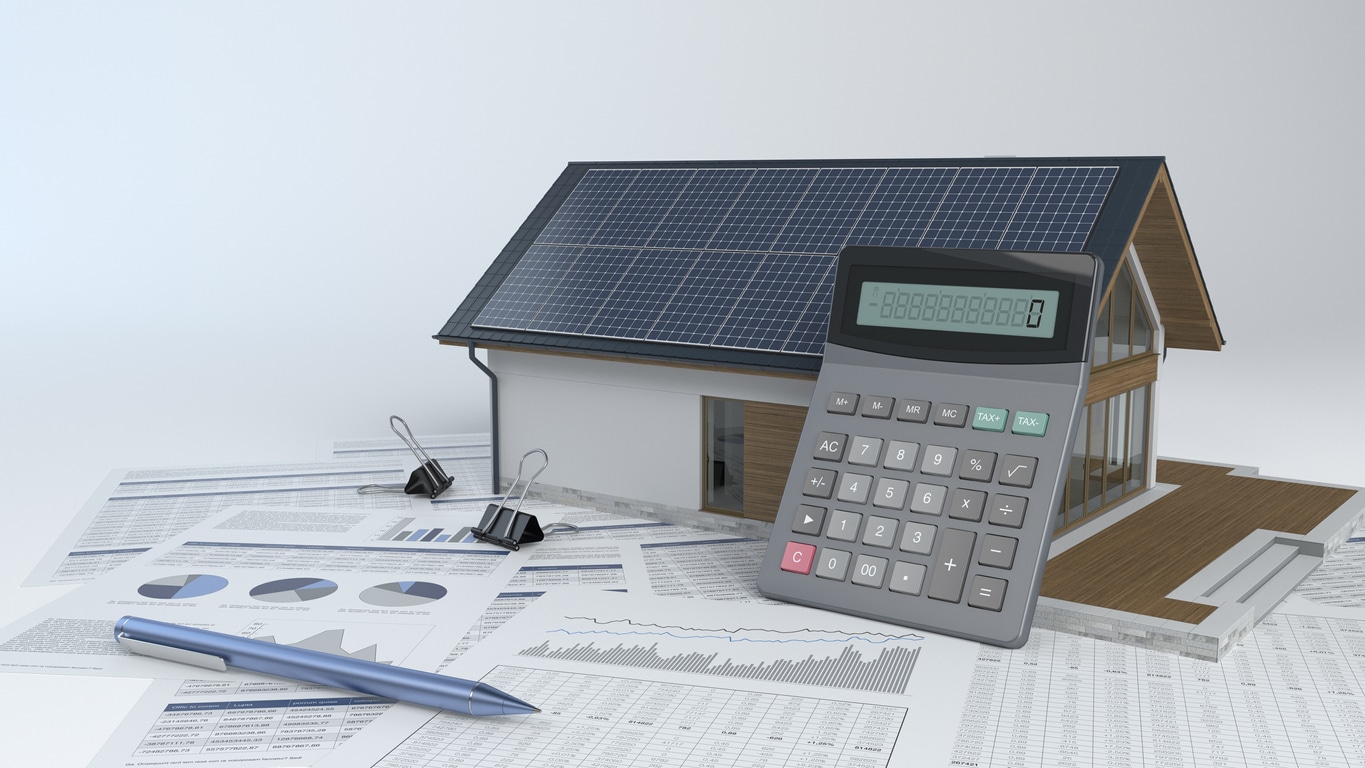
Simple Home Improvements to Make Your Home More Sustainable

Experts warn only a few years remain for humankind to prevent the worst ravages of climate change. Addressing the issue requires everyone’s cooperation. Your home significantly impacts your overall carbon footprint — how can you make it more sustainable?
Your mind might automatically turn to big changes, like switching to solar. However, there’s something everyone can do, regardless of their budget size. If you know what to do, you can accomplish many eco-friendly tasks for free or next to it.
What should you add to your spring project to-do list? Here are some simple home improvements to make your home more sustainable.
Start With Your Ingress and Egress Points
Your home wastes approximately 20% of its total energy on the ingress and egress points — 15% for windows and 5% for doors. Fortunately, these spots are among the easiest to address. Let’s look at the biggest one first.
1. Garage
The garage is a frequently overlooked ingress-egress point that can contribute significantly to your heating and cooling costs, as well as overall sustainability. If it’s uninsulated, all the trapped cold or hot air rushes into your house when you open the connecting door. Plus, any rooms above it often get icy floors in winter, causing you to crank up the thermostat.
How can you make your garage more energy-efficient and combat climate change? Take these steps:
- Insulate: Many builders skip this step.
- Seal cracks around doors and windows: If your automatic door is worn, consider an insulated replacement for improved energy efficiency.
- Clear the clutter: A messy garage is a haven for pests. While they don’t crank the heat in your absence, they chew through insulation and caulking seals, ruining your hard work.
2. Doors
Your next order of business is attacking your home’s doors. Can you see light through the crack? If so, it’s time for weather stripping. Fortunately, you can pick up rolls of this stuff for less than $20 at hardware stores and install it with zero DIY skill.
3. Windows
Windows are your next order of business. Typically, a bit of caulk will shore up any leaks in the seals if yours aren’t too old. However, take a careful look at any single-pane models you have installed. On average, dual-pane windows reduce heating costs by 24% in the winter and 18% in the summer. If they’re aged, consider replacements.
4. Damper
Do you have a fireplace? Many people forget to close the damper when the blaze goes out, letting cold air sneak into their homes. Furthermore, the seals can become worn — check and reinforce them, if you’re comfortable climbing on your roof, or call for service.
Look to the Light
Upgrading your home’s lighting is another inexpensive method of making your home more sustainable. Here are two simple home improvements to help you see more clearly without cranking up your electric bill.
1. Solar Heat Gain
What is solar heat gain? Solar heat gain refers to radiation coming in through your windows and warming your home. You want to maximize it in winter and dial it down in summer. How?
- In winter: Keep those blinds open when the sun shines. A one-way film protects your privacy during daylight hours. You can also take advantage of natural light. When night falls, close those curtains or shutter up tight.
- In summer: Strive to shade the windows on the south side of your home or use curtains to block some of the heat.
2. LEDs Versus Incandescent
Why should you cough up an extra buck or two for an LED bulb? According to the folks at the Energy Department, LEDs use 90% less energy than incandescent lights and last up to 25 times longer. You might pay more at checkout, but you’ll save money on utilities and replacements.
Be an Energy Star
Here’s an upgrade that might have to wait until you need a new washer or dryer. However, upgrading your appliances to new Energy Star models will save you a bundle. Ever since the program began in 1992, manufacturers have competed to get the highest ratings by reducing their devices’ power and water requirement.
Get a Little Help From Mother Nature
Can Mother Nature help you make your home more sustainable? Yes — here’s what to do:
1. Shade Landscaping
If you own your home, consider adding landscaping to shade your home’s south side. For example, a stately row of cypress along your property line adds privacy and keeps the worst of the midday sun from heating south-facing windows.
2. Adding More Houseplants
When plants take in carbon dioxide, they transpire, emitting a bit of water with oxygen. This light misting vapor can keep your home’s interior a few degrees cooler, unless it’s unbearably humid. Species such as aloe vera and yucca are a cinch to keep alive, even if you don’t have a green thumb.
3. Using Eco-Friendly Cleansers
You don’t have to opt for harsh chemical cleaners. You probably know about the wonders of white vinegar for mild disinfection. Did you know tea tree oil is even more effective against many germs, including E-coli? It also has antifungal and antiviral properties. In fact, studies suggest its safe and effective against COVID-19 on surfaces. Best of all, it’s 100% natural — you can feel good using it around your kids.
Improving Your Insulation
Maybe you can’t switch to solar in your situation — but nearly everyone can improve their insulation. Your home loses the most heat through uninsulated walls and attics. While you might not be able to do much about your living room, unless you’re a drywall contractor, you can put a “hat” on your home by insulating your attic. Take special care around vents, ensuring the seals are intact.
Home Improvements to Make Your Home More Sustainable
Everyone plays a role in stopping climate change. Fortunately, you don’t need to own a home or have a big budget to make a difference.
Try these home improvements to make your home more sustainable. You’ll do your part to stop climate change, while keeping more green in your wallet.
7 Comments
-
Anonymous
Many people don’t want to upgrade their appliances to new Energy Star models as they are more expensive to buy and install. And they really are.
However, such appliances can save homeowners a tidy sum in the long run – just by installing an Energy Star certified air conditioning system, you can cut your bills by up to 30%.
-
Olivia
Even though you use high-efficient appliances like Energy Star air conditioners, you should always remember to maintain it regularly. It’s vital to routinely change the AC filters, drain the lines, clean the coils, and perform other related tasks. Regular maintenance on your AC unit is important for not only preventing increased energy consumption but avoiding potential AC repairs down the road.
-
Regina
Also, remember to remove debris from your air conditioning unit – this is an important part of AC maintenance.
Dirt & grime on AC coils makes it harder for your equipment to transfer heat. That means it has to run longer and work harder to do it’s job, using more energy.
-
-
-
Anonymous
Using high-efficient Energy Star appliances can greatly improve a home’s energy efficiency and make a home more eco-friendly, indeed. However, even if you don’t have new high-efficient equipment such as heaters and air conditioners, you can drastically improve the efficiency of your system by doing regular maintenance. Even such a thing as a clean air conditioner filter can make a big difference. Changing a filter is pretty easy, and you can do it yourself for 5-10 minutes.
-
Regina
Also, consider upgrading to a high-SEER air conditioner. It brings energy efficiency, lower utility bills, and reduced carbon footprint. Overall, these models provide a more sustainable and comfortable home environment.
Before buying an AC, please remember to check new efficiency standards for HVAC systems in 2023 — these changes are legally effective from January 1 this year. -
Tay
While solar energy systems might require more drastic changes and initial expenses, they are absolutely worth it. Moreover, homeowners can now apply for government incentives such as the Federal Solar Tax Credit, which allows taxpayers to claim a credit equal to a percentage of the cost of their solar panel system installation. The current federal solar tax credit stands at 30% of the total system cost.



Anonymous
By the way, if you get your hot water from a hot water storage tank, you also need to insulate it for winter. Insulation with an R-value of at least 24 is preferable. This could reduce heat loss by up to 45% and save you around 10% in water heating costs. And the good news: you can find pre-cut water tank insulation jackets for around $20.